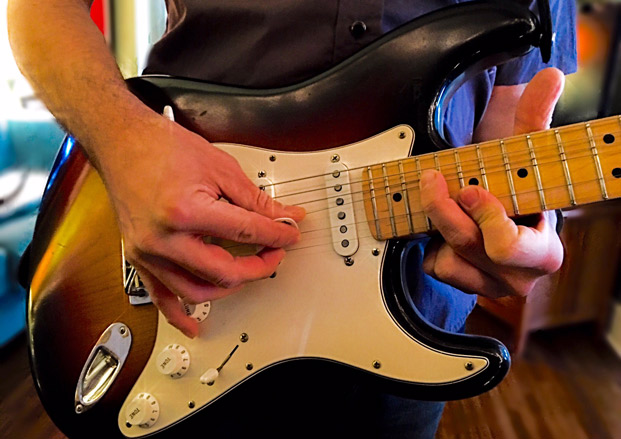Five Ways to Make Your Guitar Solos Stand Out

We all want our guitar solos to stand out, to capture the attention of the listener, to bring the song to a new level.
However, most solos disappoint and merely make a song seem longer. The problem is not the notes you play. The problem is what you are soloing over.
How many times have you taken a solo over a verse or a chorus? This is a common practice—and it needs to stop now. The basic problem is compositional. You're playing a bunch of notes over a part that has already been repeated. Where's the excitement?
It's time to add some ear candy. Use the following steps and write a new part to solo over. If you do, your next solo will enhance the song, your playing and—quite possibly—your career. By the way, I've given this same advice to many of my students and bands that have come to me for production advice. Every one of them suggested I share them. They work. They are tested.
1. CHANGE KEYS. This is the Number 1 tip. Numero Uno. The big one. Nothing will make a solo stand out like changing to a higher key. Even if you play the same chords from the verse, it will sound like a new part in a new key and make a solo jump out. Interval of choice? A minor 3rd. That's three frets higher. If you're in E, go to G. Try it.
2. CHANGE THE ATMOSPHERE. Most of today's pop/rock/blues/prog songs are heavily produced. It's time to add some space, some room. Lose the rhythm guitars. The heavy ones. Play over a keyboard, an acoustic guitar or just drums and bass. We're talking about giving your solo some room to be heard.
3. CHANGE THE FEEL. Break it down to half time. Or move to a funk groove from a straight rock groove. It'll still be in time at the same tempo. Of course, you can dramatically shift to a new tempo and a new groove like 6/8 from 4/4. But this might hurt the song's commercial appeal.
All the latest guitar news, interviews, lessons, reviews, deals and more, direct to your inbox!
4. CHANGE MODES. Major to minor or vice versa is common. How about taking your song from a minor rock to a major Lydian? Sharp that 4th note. Instant Steve Vai! Or go to a harmonic minor. Instant Yngwie!
5. CHANGE THE AMOUNT OF NOTES. Fast song? Play long, slow emotional notes. Slow song? Play short, fast bursts of notes. Think bluesy. It works quite well when executed with taste and emotion.
These tips work in every style. They work individually or all at once. Remember, however, that no matter what you play, it must be appropriate. You want to lift, you want to wake up, you want to compliment and transcend. But you don't want to alienate.
I’m a session guitarist from New York who started playing at age 6 and sight reading right off the bat. That’s how I was taught, so I just thought everyone started that way. I could pretty much sight read anything within a few years, and that aided me in becoming a session guy later in life. I took lessons from anyone I could and was fortunate enough to have had some wonderful instructors, including John Scofield, Joe Pass and Alan DeMausse. I’ve played many jingle sessions and have even written a few. I’ve “ghosted” for a few people who shall remain nameless, but they got the credit and I got the money. I’ve played sessions in every style, from pop to jazz.
